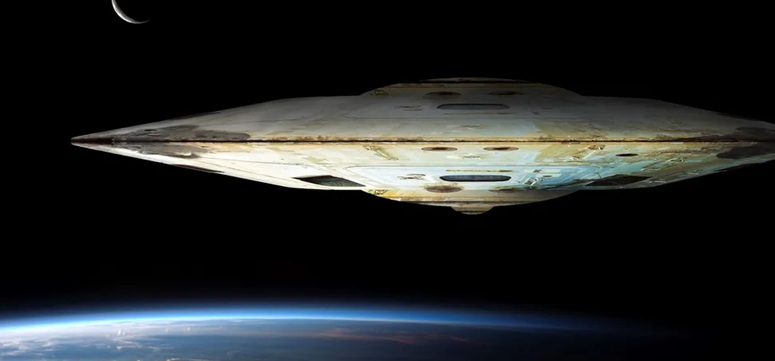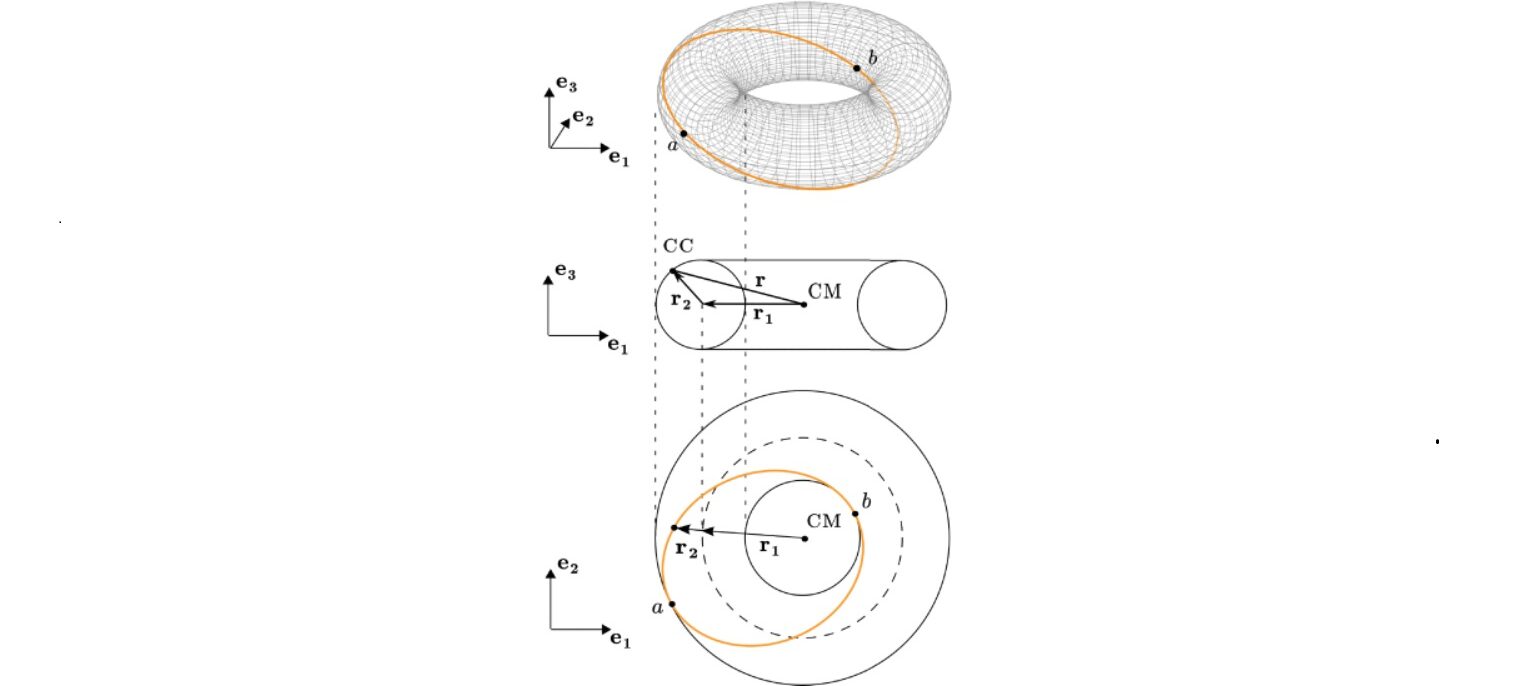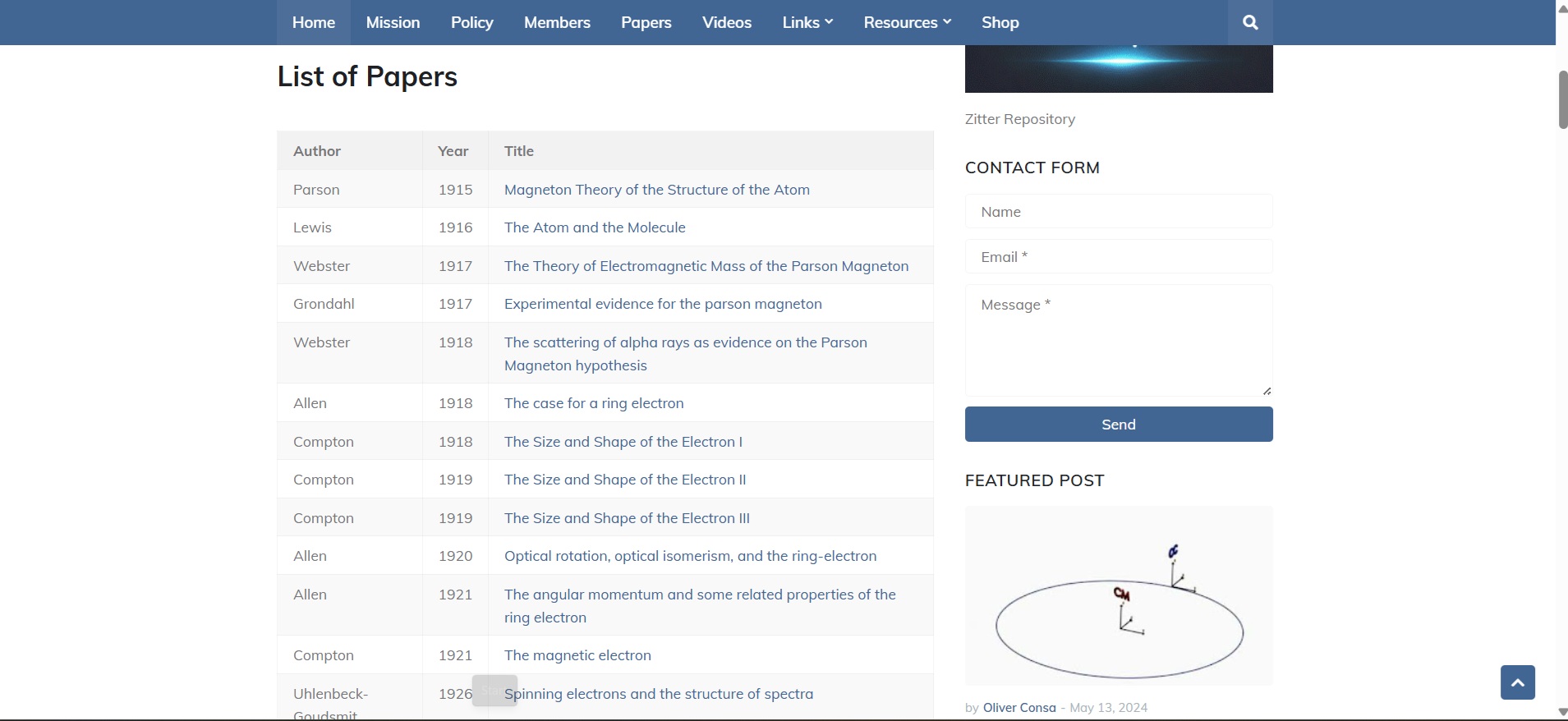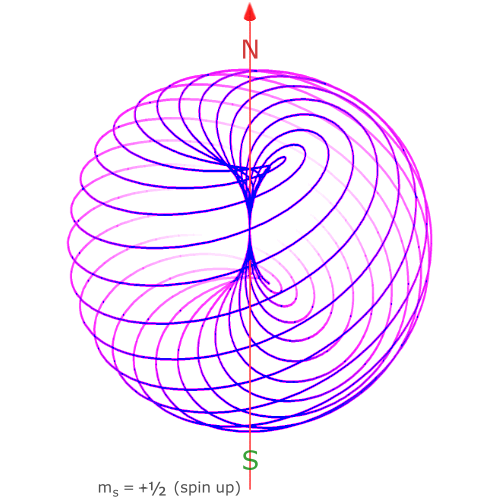The world is a troubled place, and I don’t feel too optimistic about it right now. I won’t go into details because this is a physics blog, not a politics blog. But for me the cherry on top of all the internecine strife comes from Avi Loeb. He’s been saying 3I/Atlas might be a massive alien spaceship. That’s because it’s come in on the planetary plane, and the coma is in front not behind. Wikipedia says it’s just an interstellar comet, but it still bothers me. That’s maybe why I had a bad dream last night about an alien invasion. Or maybe it’s because I’ve watched too many science fiction movies:
 Image from Space.com, caption: Department of Defense official floats the idea that an alien mothership is cruising our solar system. (Image credit: Marc Ward/Stocktrek Images via Getty Images)
Image from Space.com, caption: Department of Defense official floats the idea that an alien mothership is cruising our solar system. (Image credit: Marc Ward/Stocktrek Images via Getty Images)
However all that apart, I do feel optimistic about physics. We recently had Adam Reiss saying there are issues with the standard model of cosmology, and Gerard ‘t Hooft saying quantum mechanics is nonsense. These guys are Nobel prize winners. It’s as if things are shifting out there, and more and more people are willing to speak out against what you might call scientific orthodoxy. Like Roy Kerr spoke out against black hole singularities. As far as I can tell more and more people are dissatisfied with things like the standard model of particle physics. More and more people appreciate that science is all about understanding and progress, not being groupies for a theory that can’t explain how a magnet works. A sign of the times for me is that I’m talking to more and more people, about things like gravity and particle physics. I get a lot of emails. I also have a Zoom pro account so I can talk to face to face. Forgive me for not saying more. Personal communications are personal.
The Zitter Institute
Another sign of the times is that Oliver Consa set up the Zitter institute. I’ve been a member for less than a year, but I’ve known of Consa for over five years. That’s because I came across his paper Something is wrong in the state of QED¹. I was so impressed that I wrote a physics detective blog post about it. I thought it was great detective work by Consa. He tells us how QED isn’t really the super-accurate theory it’s claimed to be, because it was revised multiple times to match ever-more-precise experimental results. Consa quotes Freeman Dyson saying this in 2006: “As one of the inventors of QED, I remember that we thought of QED in 1949 as a temporary and jerry-built structure, with mathematical inconsistencies and renormalized infinities swept under the rug. We did not expect it to last more than 10 years before some more solidly built theory would replace it. Now, 57 years have gone by and that ramshackle structure still stands”. That was in 2006, so now 76 years have now gone by, and the ramshackle structure still stands².
The promotion and evolution of Zitter models of the electron’s dynamics
Anyway, the Zitter institute is an international working group whose primary objective is “the promotion and evolution of Zitter models of the electron’s dynamics”. The website has a variety of different pages, such as a home page, a mission page, a policy statement page, a members page, a papers repository, and videos. There’s also links to other useful websites, mathematica resources, and a shop:
 Zitter Institute screenshot, see the Zitter Institute
Zitter Institute screenshot, see the Zitter Institute
It’s all about understanding the electron. That’s because when it comes to particle physics, the electron is of paramount importance. Yes, the photon is important too, as is the neutrino, but the electron and the proton, along with their antiparticles, are the only stable particles with mass that we’ve ever actually seen³. And if you don’t understand the electron, you can’t understand the proton. Then if you don’t understand them, you can’t understand the neutron, so you can’t understand the nuclear force. And so on⁴. It’s like Einstein said: “You know, it would be sufficient to really understand the electron”.
The zitterbewegung interpretation of quantum mechanics
Check out the Zitter Institute mission page where you can read about “the well-known but puzzling zitterbewegung behavior that was uncovered by Erwin Schrödinger”. Consa tells us this behaviour is produced by a circular motion about the direction of the electron spin, with a radius in the order of the electron’s reduced Compton wavelength. This motion yields a current that gives rise to the intrinsic magnetic moment of the electron. Consa also says one of the best-known zitter models was The zitterbewegung interpretation of quantum mechanics by David Hestenes, which was published in Foundations of Physics in 1990. Consa also refers to the 1984 Classical Model of the Dirac Electron by Asim Barut and Nino Zanghi, the 2001 book by Martin Rivas called Kinematical Theory of Spinning Particles, and Giovanni Salesi’s 2002 model called Non-Newtonian Mechanics.
Gyromagnetics of the Electron Clock
The Zitter Institute home page is in the form of a blog, comprised of news and newsletters, with a new post about every month. The latest just happened to be about David Hestenes’ new paper, which was published in IEEE and is called Gyromagnetics of the Electron Clock:
 Figure 4 from David Hestenes’ Gyromagnetics of the Electron Clock. Caption: In a plane rotating with angular velocity ω₁σ₃ around the CM, the electron’s lightlike circular orbit lies on a toroidal surface called the electron energy shell that projects to the orbital plane as an ellipse with antipodes a and b.
Figure 4 from David Hestenes’ Gyromagnetics of the Electron Clock. Caption: In a plane rotating with angular velocity ω₁σ₃ around the CM, the electron’s lightlike circular orbit lies on a toroidal surface called the electron energy shell that projects to the orbital plane as an ellipse with antipodes a and b.
It’s open access, which is nice, and there’s a total of 89 references, which is useful. I found the pdf easier to look at than the online document myself. Note the introduction, where Hestenes says this: “This paper encapsulates a long term research project to incorporate de Broglie’s idea of the electron as a particle clock into the interpretation of Dirac’s equation and study its implications. The project began in 1966 with the book Space Time Algebra [1], which laid out the essential mathematical insights that have guided robust development to this day”. The project began in 1966, nearly sixty years ago. Consa tells us that Hestenes was a founding member of the Zitter Institute, and is now 92 years old. He also tells us that Hestenes remains intellectually active despite health challenges. I should be so lucky.
The Zitter repository
The previous blog post was advising of the newly-created Zitter repository, which is “a collection of all published papers that reference the Zitter Model of the electron”. As I speak it lists 165 papers and books, starting with Alfred Locke Parson’s 1915 paper Magneton Theory of the Structure of the Atom, followed by Gilbert Lewis’s 1916 paper The Atom and the Molecule:
 Zitter Institute screenshot, see the Zitter Institute
Zitter Institute screenshot, see the Zitter Institute
It also includes Williamson and van der Mark’s 1996 paper Is the electron a photon with toroidal topology? as well as Qiu-Hong Hu’s 2005 paper on The nature of the electron. As you might expect some of the more recent items are by Zitter Institute members⁵, such as the 2023 paper The Structure of the Electron Revealed by Schwinger Limits by Carlos dos Santos, the 2024 paper Rethinking Electron Statistics Rules by Andras Kovacs and Giorgio Vassallo, the 2024 paper Critical Review of Zitterbewegung Electron Models by Marc Fleury and Olivier Rousselle, the 2025 paper Classical Dirac particle I co-authored by Martin Rivas⁶, the 2025 book A Possible World. Time Symmetry and a New Foundation for Quantum Mechanics by Dennis Witherell, and the 2025 paper The Zitter Electron Model and the Anomalous Magnetic Moment by Oliver Consa. I won’t go into the individual works, but I do think Consa has done some sterling work putting this repository together. I also think that I need to read every last item, because there’s a lot I don’t know about.
Members
As I speak there are 19 members of the Zitter institute, located in Belgium, Brazil, China, the Czech Republic, France, Greece, Hungary, India, Italy, Spain, Sweden, the UK, and the USA. Consa himself is Spanish. You can find the list here. Click on the names to see websites and papers. They’re a mixed bunch, but a good bunch. An international bunch, some young, some not so young. There are no women at present, but such is life. You may have come across some of them before. For example Martin Rivas has been doing this stuff since 1985, and has 81 papers on ResearchGate. For example Marc Fleury is an open source entrepreneur who has his very own Wikipedia page. Then there’s Emmanouil Markoulakis, who co-authored a ½ spin fiber model for the electron. You may have seen this gif from his model kicking around on the internet:
 Gif from Spin relativistic electron geometric magnetic flux dynamic model by Emmanouil Markoulakis
Gif from Spin relativistic electron geometric magnetic flux dynamic model by Emmanouil Markoulakis
Another example is Andras Kovacs. He co-authored a paper called Electromagnetism as a purely geometric theory which was mentioned on PhysOrg. Sabine Hossenfelder was critical of it. I thought it was unfair criticism myself, because Hossenfelder’s lay audience won’t understand the mathematics that she said was wrong. It was as if she was using anything she could to diss the notion of electromagnetic geometry, because she’s overly invested in quantum gravity. I hope that one day she can be persuaded otherwise, because I am totally confident that electromagnetism is geometrical. You can read an explanation of why Hossenfelder was mistaken in Why Sabine Hossenfelder is wrong: case electromagnetism as a purely geometric theory by Jussi Lindgren, Andras kovacs, and Jukka Liukkonen.
Meetings
We’ve been having regular Google Meet “coffee shop” meetings every Wednesday, though these are currently paused for the summer holidays. They’re supposed to be for an hour, but such is the enthusiasm that they sometimes run for two. Everybody speaks English, which makes me realise how lucky I am. They’re well-disciplined meetings to boot, with people putting their Google Meet hands up instead of talking all over one another, and a lead who calls the shots. Efstratios Zaloumis has been taking the lead of late, to share the load, but he doesn’t do it every time. In general, the members agree a schedule of subjects up front, then talk about them one per week. There’s sometimes an open forum, sometimes a guest or two is invited, and there’s often a presentation followed by a discussion session. I gave a PowerPoint presentation on the screw nature of electromagnetism in one session. Another week Emmanouil Markoulakis took us through his dynamic model, another week Martin Rivas explained his kinematical theory of elementary spinning particles, et cetera. It’s good stuff, with a lively debate.
A good-natured camaraderie in a common cause
Of course, not everybody agrees with everybody about everything, but I’d say there’s a lot of mutual encouragement, and a good-natured camaraderie in a common cause. I am sure there will be convergence and development. I would recommend it to anybody who is interested in understanding the electron and making a contribution to fundamental physics. There are one or two people I’m thinking of when I say this. However, I’m conscious that some people prefer to work alone, and it is Consa’s baby. If I were him, I’d be wary of the group growing too much, because things could quickly become unmanageable. It might be nice however to recruit one or two people who could assist members to get their papers into journals like Nature. Historically they published papers like The electron as a vector wave by Charles Galton Darwin, who referred to “a spherical harmonic for the two directions of spin”. That was in 1927. Here we are nearly a hundred years later, and it would be nice to see them publishing similar papers. Perhaps Foundations of Physics might like to be in the vanguard of the old/new fundamental physics. Perhaps a little publicity might help things along. From the likes of Tommaso Dorigo, Peter Woit, and Sabine Hossenfelder. Maybe one or two special guests might help too. Daniel Baldomir springs to mind. He’s Spanish, like Consa, and he co-authored the Geometry of Electromagnetic Systems. But hey, it’s not up to me, so we’ll wait and see. Meanwhile live long and prosper, David Hestenes, and keep on trucking, Zitter Group. It’s good to talk. I hope I can contribute something that the members find useful. Because I have, as they say, bought the T-shirt:
 Zitter Institute T-shirt image from the Zitter institute shop
Zitter Institute T-shirt image from the Zitter institute shop
1 Another version is called Something is rotten in the state of QED.
2 Not only that, but it is now accompanied by another ramshackle structure called QCD. To makes matters worse, there’s a further ramshackle structure called the Higgs sector. This flatly contradicts E=mc². See Light is Heavy by Martin van der Mark. It’s about a photon in a gedanken mirror-box. The box is harder to move when the photon is in there, because mass is just resistance to change-in-motion for a wave in a closed path. Hence a radiating body loses mass. Hence in electron-positron annihilation, two radiating bodies lose all their mass, and then aren’t there any more.
3 The existence of other particles such as the W boson has been inferred, but the particles themselves have not actually been seen. See the 2003 Physics World article Carlo Rubbia and the discovery of the W and Z by Gary Taubes. He tells how Rubbia sold the “discovery” of the W boson to a willing audience at CERN in January 1983. He got a standing ovation, even though what had actually been observed was a high-energy electron.
4 In fact, you can’t understand particle physics at all. So much so, that coming up with a three generations of particles is a waste of time, as is basing a theory on particles like gluons, quarks, and vector bosons, none of which have ever been seen. (If you believe in asymtotic freedom and clouds of virtual particles, I’ve got a bridge you might like to buy). In similar vein cataloguing the particle zoo is useless. It’s the study of ephemera. It’s like classifying firework explosions in the mistaken belief that it will somehow teach you how to make gunpowder.
5 I should mention that Qui-Hong Hu is a member of the Zitter institute. I’m sure John Williamson and Martin van der Mark would be members if they were still with us. See https://quicycle.com/.
6 Also see Classical Dirac particle II. Interaction with an electromagnetic plane wave. It’s on the arXiv.
https://youtube.com/watch?v=JC1UmFlTTUg&si=lVaxLGRIsxB7qaXn
Also signed up for newsletter. I love what little Ive read so far. Spot qui, on Friday, gotta get back to the books Proff!
https://youtube.com/watch?v=JC1UmFlTTUg&si=_wHv28vFG5YpjYq
Also I signed up for the newsletter only. What a great addition to my never ending curriculum of home fool skooling.
Also 31/Atlas appears to produce a bow shockwave , perhaps ?
And Ilif made of the correct elements/minerals ; traveling so fast it could also act like a giant galactic size Zwiffer ?
Uhn, what a slow robotic video. It didn’t explain anything. I was hoping I’d see some mention or Larmor precession, but it didn’t come. It’s analogous to the gyroscopic precession of a boomerang. Martin Rivas explained it much better, and much quicker in one of our Zitter sessions.
Maybe re 3I/ATLAS. We’ll see.
Wow! Quite the brain dump tour de force! Are you ok? Going away?
.
. Thanks!
Brain dump? Tour de force? This is one of my smaller articles! Articles like the electron, what charge is, and the mystery of mass is a myth are much more of a tour de force. Yep, I’m OK and I’m not going anywhere!
A geometric intuition for the half-integer spin of electron that I imagined:
SU(2) double covers SO(3), meaning that the double covering is a homomorphism where the preimage set contains twice as many elements as the image set. My intuitive understanding of this is in terms of a “double rotational degree of freedom”. This double rotational freedom could be interpreted as a combination of spin and axis rotation. How can a 4π reset be realized? When the spin period and the axis-flipping period are synchronized, a reset after two flips of the axis corresponds precisely to a 4π spin reset.
Of course, the picture you mentioned in your article may correspond more closely to the phenomenon.
I always find something insightful in your blog ,Thanks!
Thanks Zou. In my mind the double rotation is rather like combining a smoke ring rotation with a steering wheel rotation. One rotation is poloidal, the other is toroidal. See Wikipedia and check out Adrian Rossiter’s Antiprism website for some animations. IMHO you have to inflate the torus so much that it looks spherical, and then you get what Maxwell said was a worble embracing itself.
Better news John, I was able to download the entire Zitter Institute library via my pre-existing YouTube t.v. account. Unfortunately, YouTube’s algorithms constantly wants to send you to some guru spiritual group first. I will now slowly repost Z.I. onto FB and Bluesky.
CURSES ON ALL COPENHAGEN INFIDELS !
I’m having a blast watching the videos first, the 2-5 hrs chats and lectures will eventually be explored.
KUDOS to all involved !
Many thanks Greg. We are getting there!
Some small progress from the Amerikan satellite office. First, I ordered a t-shirt & coffee mug from The ZITTER Institute.
I also continue to repost pertinent articles onto BS & FB. Finally , I broke down and started a paid subscription for Dr. Sabine; only to hopefully get her and others attention and point it towards The ZITTER Institute.
A thousand thanks Greg. I hope it will be money well spent, and that you have a good experience. Do let me know how you get on.
HERE ! HERE !
https://youtu.be/ZO5u3V6LJuM?si=N7-
kFyneyxRra2Tb
Good stuff Greg. Thanks. I think Sabine Hossenfelder was spot on with her criticism of fundamental physics.
Should have posted this first.
Man Alive! Did they do Dr. Sabine dirty or what?
https://youtube.com/shorts/KvzYWJDrVGM?si=1AdRZRgZW-hSo803
Back to some positive good news.
https://youtu.be/LBqb3Xe4VXk?si=_ZnuxLjElek6lh-p
Hmmmn. I think of Alexander Unzicker is a kindred soul, but I am not keen on Mach’s principle!
As usual I went to Wikipedia to brush up on F. Mach. Evidently Einstein himself first coined the phrase “Mach’s Principle”. That there is now an expanded table from 0-10 on Mach Priciples. And that one of the best scientific description is made in layman’s terms : “interia way over here affects mass way over there?” and the inverse as well ??
I’m having a hard time wrapping my head around the concepts Dr. Unzicker proposes, therfore, I patiently wait for your math/logic based reasons for your position.
Very interesting and novel physics site!! Keep up the good work!!
Many thanks Emmanouil. I hope I can help in some way.